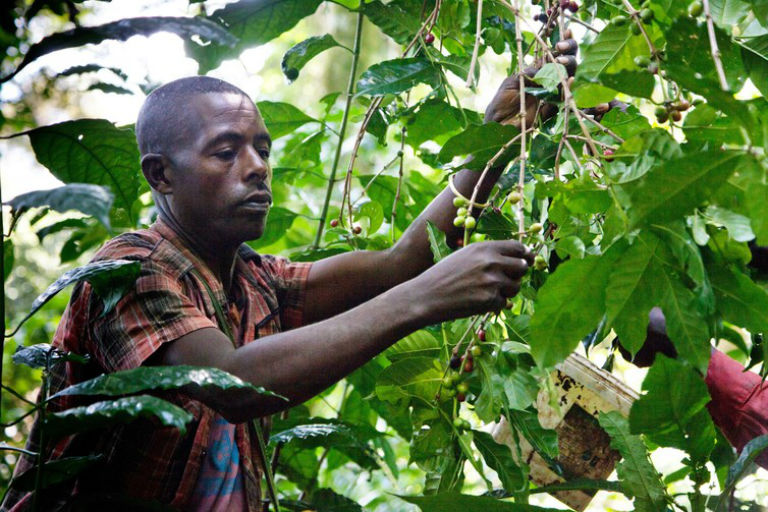- Wild Ethiopian coffee is worth three times as much as non-wild coffee on the commercial market.
- Southwest Ethiopia’s vulnerable forests are the center of of wild coffee’s genetic diversity.
- Wild Ethiopian coffee represents an insurance plan of sorts for the commercial coffee market.
Coffee is the drink of choice for millions of us. But the world’s second-most traded commodity originates in Ethiopia – and its home is under threat.
Ethiopia isn’t all dusty deserts – far from it. The country also contains rugged highlands and lush, tropical forests. Coffea arabica grows here in its original, wild form. The forests of south-west Ethiopia are considered to be the birthplace of coffee and the centre of its genetic diversity.
But these forests and this gene pool are under pressure. It is already one of the last major woodlands remaining in Ethiopia, and deforestation over the past 40 years has resulted in the loss of one-third of the south-west’s forest cover. We risk losing the forests entirely in coming decades.
It is critical that these forests are protected. Commercially grown coffee has been bred over the years to ensure high yields and other useful characteristics. But it is descended from a small number of individual plants, and so relies on a relatively narrow genetic range – just 10% of the diversity found in the wild. This makes it vulnerable to pests – and climate change is an additional threat.
Wild coffee on the other hand exhibits much greater genetic diversity, which increases its chances of adapting to new challenges and reduces the possibility of extinction. It represents an insurance policy for plantation coffee, in case commercial strains are ever badly damaged.

critical role as a “water tower” for the river Nile – serving lowland Ethiopia, South Sudan and Egypt, storing carbon to stabilize the climate and enhancing rainfall upwind in the often drought-affected, northern highlands of Ethiopia.
But maintaining these forests is difficult. Rainfall in the south-west is good and the soil fertile and there is a long history of people moving here for farming, including from the drier and more densely settled north of the country. This, alongside investor interest in commercial coffee and tea plantations, has seen agricultural land encroach on the forest. Without adequate resources to police such a large area, the forest became “open access” – anyone could go in and take what they wanted and they rarely got apprehended.
In an effort to protect the country’s forest resources, the Ethiopian government adopted a nationwide policy of Participatory Forest Management (PFM), which bestows management responsibilities on communities that live near the forest and have had traditional rights to it.
Communities elect “forest management groups”, which include women, to administer their bit of forest for which they have secured tenured rights from the government. This helps them control access to the forest and stop deforestation. In return for the secure tenure and usage rights, the community has to ensure that the natural forest is maintained, which they do through regular monitoring.
To read the rest of this commentary, please see the The Conversation, where this piece originally appeared.
Coffea Arabica plant. Photo courtesy Wikimedia Commons













